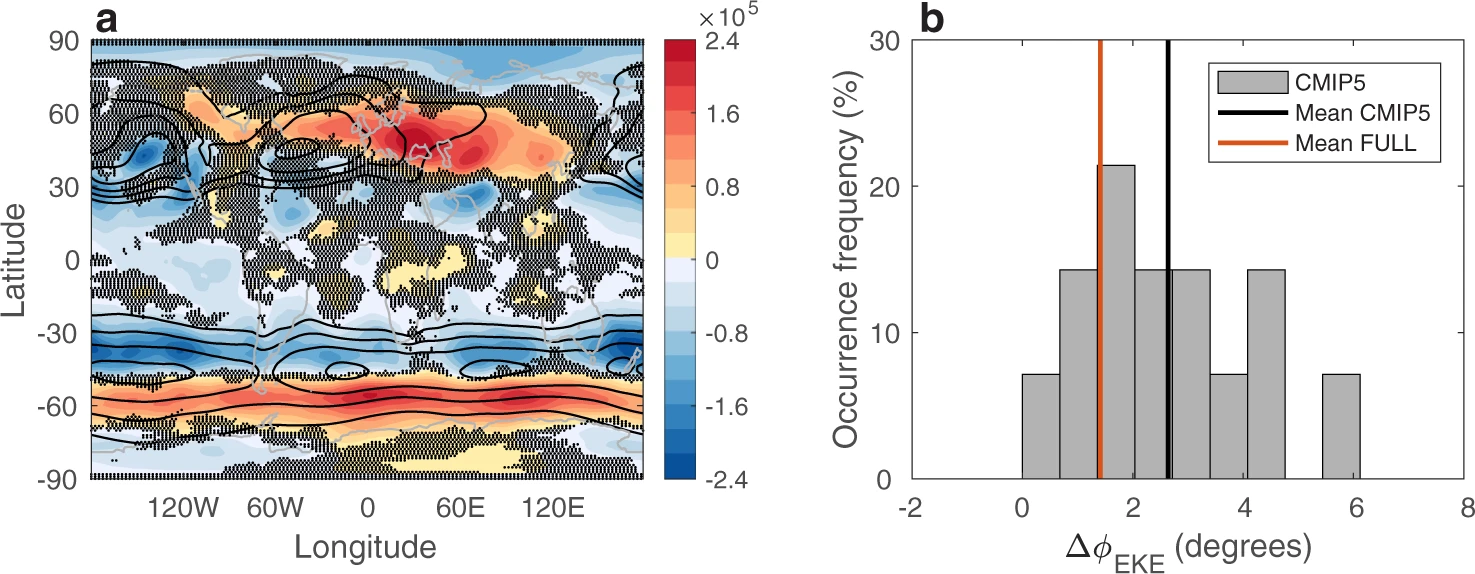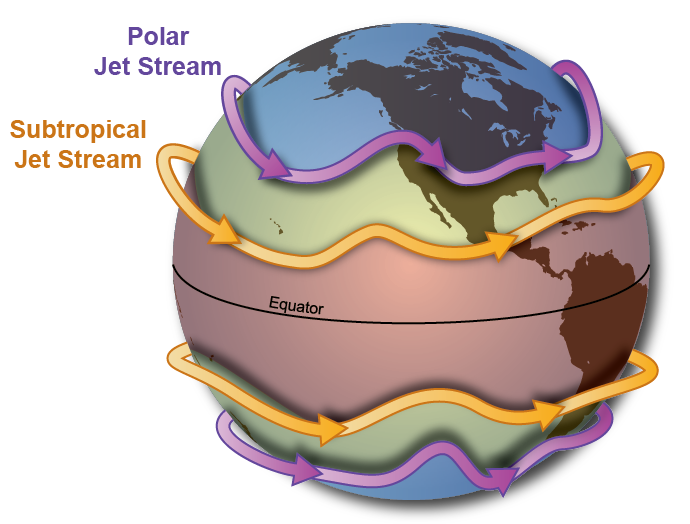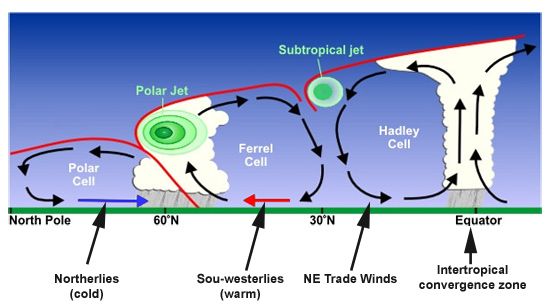Latitudinal Shift
Global warming is not only expected to cause a latitudinal shift of the jet-stream, it already has. There has been a measured poleward of the jet-stream in the past 30 years. This is an expected result of global warming.

Source: https://www.nature.com/articles/s41467-022-29392-4
Latitudinal Shift of the Jet Streams
There are four Jet Streams. Two in the Northern Hemisphere (NH) and two in the Southern Hemisphere (SH).

Source: https://www.weather.gov/jetstream/jet
These jet streams oscillate in relatively stable latitudes around 30º N/S and 50º – 60º N/S (N/S = north and south).
The jet streams are a major player in climate and weather. Climate affects the jet streams and the jet streams affect weather. While the oscillations of the streams are chaotic in nature, their relative positions are generally predictable to remain with certain bounds as described above. The earths atmosphere contains what are called atmospheric cells. As seen in the image below, they include the Polar Cell, The Ferrel Cell, and the Hadley Cell. It has been postulated through climate models that global warming would affect the position, or structure, of these cells.
The general prediction was that the Jet Streams would move north and south in their respective hemispheres, and rise in altitude. This was assumed due to a very basic reality in physics, warm air expands and cold air contracts. A warmer atmosphere means the jet streams should rise in altitude and shift towards the poles. This of course has implications for climate change and weather.
2010 – Not Directly Attributable to Global Warming… Yet.
Observations have now shown that the jet streams are in fact shifting as expected. Again, we see that the observations are matching expectations, which indicates yet another confirmation signal. As of 2010 the shift can not be directly attributed to global warming. But with so many signals pointing in the same direction, it is becoming increasingly obvious what may be driving the shift.
Storms are expected to shift tracks:
This may be considered a benefit by some and detrimental to others. At this point (2010) we have already seen an increase in the number of named storms. So that means storms of greater strength.
What does ‘Latitudinal Shift’ mean though, practically speaking?
Why should we be concerned if the jet-stream moves to the north…? Latitudinal shift means that weather and regional climate patterns will change. Remember, all of modern civilization developed in a climate around the thermal equilibrium of the Holocene (the average radiative forcing of the last 8000 years).
 Think about it this way: Say you owned a 100,000 acre (40,000 hectare) ranch in Texas. The latitudinal shift causes the rains that used to fall on your land shift north. Your cattle no longer have the benefit of the water that used to fall on your ranch. Now you need to ask yourself, how easy is it to physically pick up your 100,000 acre ranch and move it north to where the rain is?
Think about it this way: Say you owned a 100,000 acre (40,000 hectare) ranch in Texas. The latitudinal shift causes the rains that used to fall on your land shift north. Your cattle no longer have the benefit of the water that used to fall on your ranch. Now you need to ask yourself, how easy is it to physically pick up your 100,000 acre ranch and move it north to where the rain is?
Well, you can’t move the land, but you can move north. So you decide to sell your land in the south. But now that land is worth less, because the rain is no longer coming. So you either sell it at a loss or abandon it. Now you have less money to move north with to buy a new ranch. Welcome to latitudinal shift and what it means, practically speaking.
Links
- 2008/04/17 Science Daily – Jet Streams Are Shifting And May Alter Paths Of Storms And Hurricanes
- 2006/05/26 Science Daily – Faster Atmospheric Warming In Subtropics Pushes Jet Streams Toward Poles
- 2006/05/25 NASA – Faster Atmospheric Warming in Subtropics Pushes Jet Streams Toward Poles
- https://oceanservice.noaa.gov/education/yos/resource/JetStream/global/jet.htm

